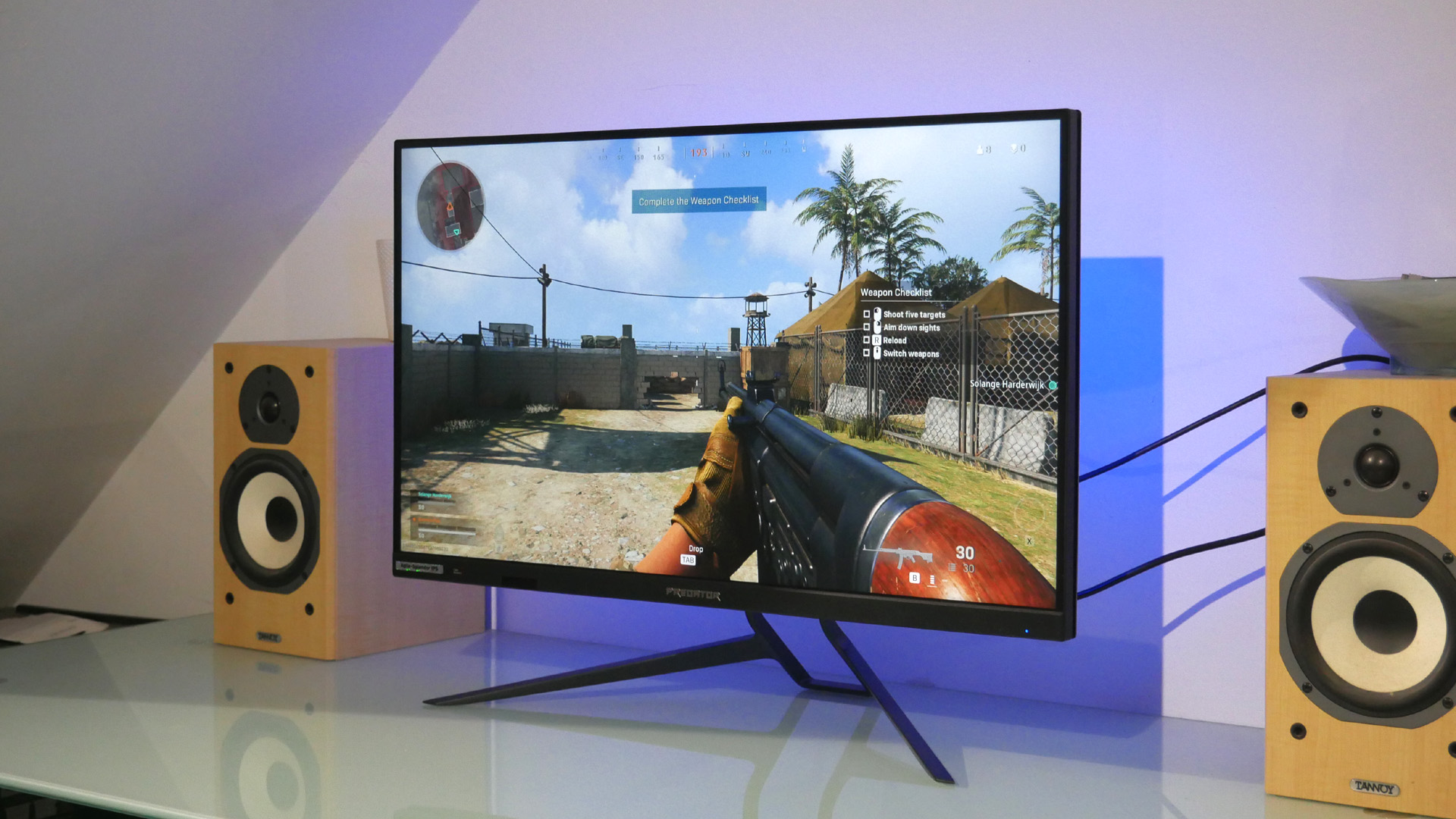GamesRadar+ Verdict
The Acer Predator XB3 XB323QK is a fabulous, fully connected 4K high-fresh panel, but not entirely without flaws.
Pros
- +
4K at 144Hz is absolutely killer
- +
HDMI 2.1 and USB-C
- +
As quick as IPS tech gets
Cons
- -
SDR mode is dull
- -
HDR support is limited
- -
Not exactly cheap
Why you can trust GamesRadar+
The want is strong for the Acer Predator XB323QK. A full 4K IPS 32-inch panel running at 144Hz with 1ms response, adaptive sync, HDMI 2.1, and HDR support? That’s one heck of a package. Where do we sign up?
But hang on. It’s certainly true that the Predator’s combination of features fits a certain high-end sweet spot. Arguably, 4K@120Hz on a 32-inch panel is set to replace 27-inch 1440p as the go-to monitor spec for gamers in the know. After all, not only is it a good fit for the latest 4K@120Hz-capable games consoles with HDMI 2.1 interfaces, 4K at high refresh is also just about to get a whole lot more accessible on the PC thanks to new GPUs with dramatically more performance due later this year from AMD and Nvidia.
On the other hand, great on-paper specs don’t always translate into some form of a dead-cert best gaming monitor in terms of performance, especially once you drill down into the fine details. Just as a 'for instance', the XB323Qk’s HDR support is as basic as it comes. What’s more, our expectations around gaming monitors have been somewhat recalibrated of late thanks to the stunning Alienware 34 AW3423DW and its OLED panel. So, the Acer Predator XB323QK is promising. But it still has plenty to prove.
Design & Features
The star of the Acer Predator XB323QK’s show is undoubtedly the 32-inch 4K IPS panel, all 3,840 by 2,160 pixels of it. Acer rates it at 1ms for grey-to-grey response and 0.5ms for the less demanding MPRT metric. That’s about as good as IPS tech currently gets. To that, you can add a 144Hz refresh for smooth, fluid frame rates. You can, of course, get even faster displays. But not at 4K currently, though that is set to change soon.
Anyway, the whole 4K gaming monitor running at a high refresh thing strikes what we think is a super appealing balance between visual detail and speed. Sure, you can have 360Hz-plus from a 1080p panel. Or 240Hz at 1440p. But beyond 144Hz, returns from higher refresh diminish for most gaming scenarios outside competitive esports.
What’s more, the Predator XB3 has both DisplayPort 1.4 and HDMI 2.1. So you can access the high refresh on console and PC (note that the full 144Hz is limited to the DisplayPort socket and PC gaming, a console connected via HDMI 2.1 will top out at 120Hz). That said, PC gamers in particular should bear in mind just how much GPU load a 4K monitor generates. Pumping out 8 million pixels 144 times a second demands a very high-end best graphics card contender, albeit new mid-range boards due later this year should provide more affordable 4K gaming.
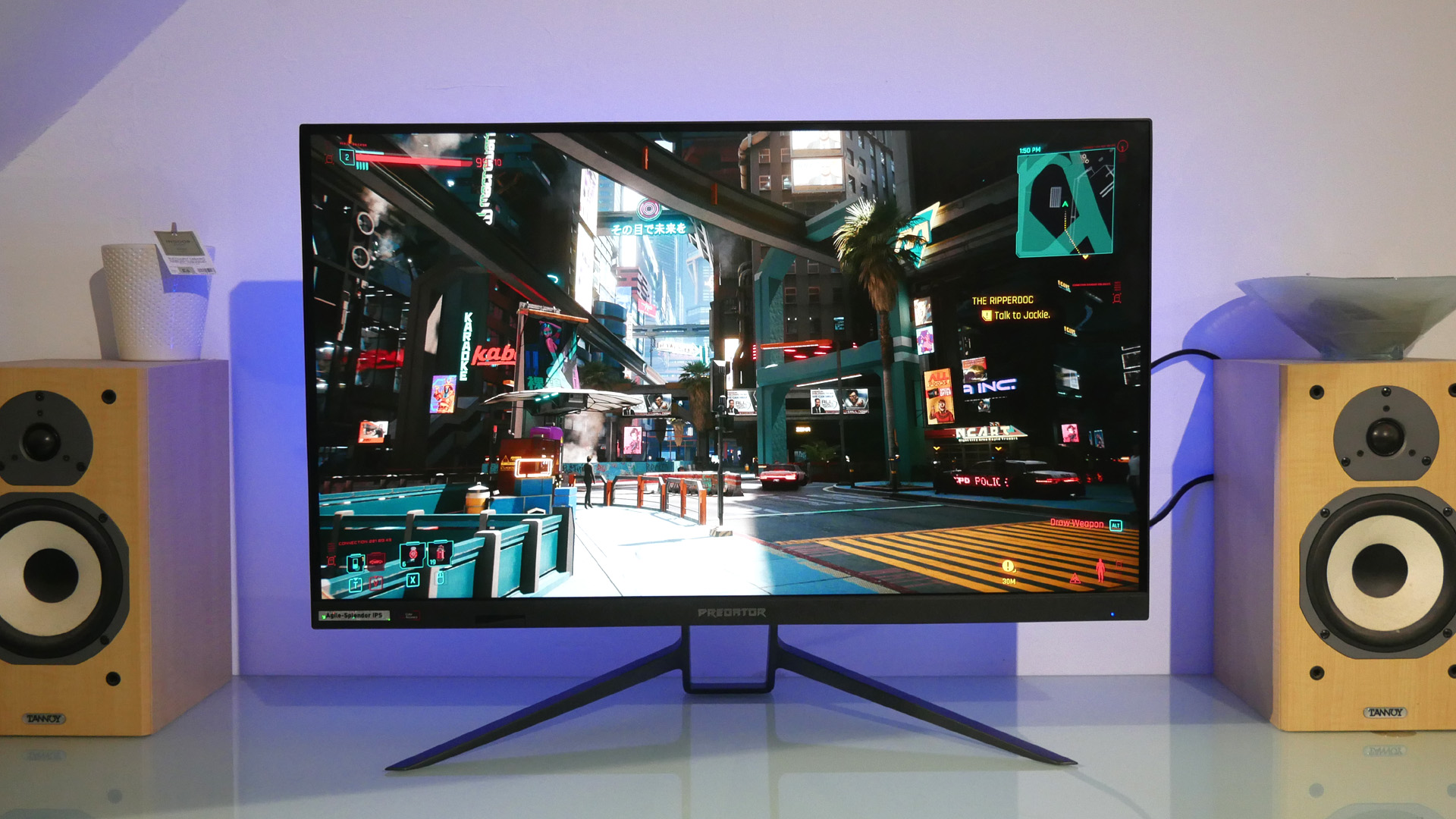
If that’s the main attraction, further details involve basic HDR support in the form of VESA DisplayHDR 400 certification (hence no local dimming) and 90 percent of the DCI-P3 digital cinema color space. Neither is hugely impressive - the claimed dynamic range and color accuracy are nothing special.
There’s better news elsewhere, however. Along with DisplayPort and HDMI, you also get USB Type-C connectivity complete with power delivery. Admittedly, that’s limited to 65 watts, so you’re not going to keep a high-performance gaming laptop doing its thing fully juiced. But it does allow for single-cable connectivity for day-to-day computing.
Design-wise, the Acer Predator XB323QK is fairly gamery, with bold programmable RGB lighting on the rear which can be a bit divisive, and it’s a little dated looking despite slim bezels on three sides of the panel. But it’s very nicely put together. The metal stand in particular is very robust and offers a full range of adjustments, including rotation into portrait mode.
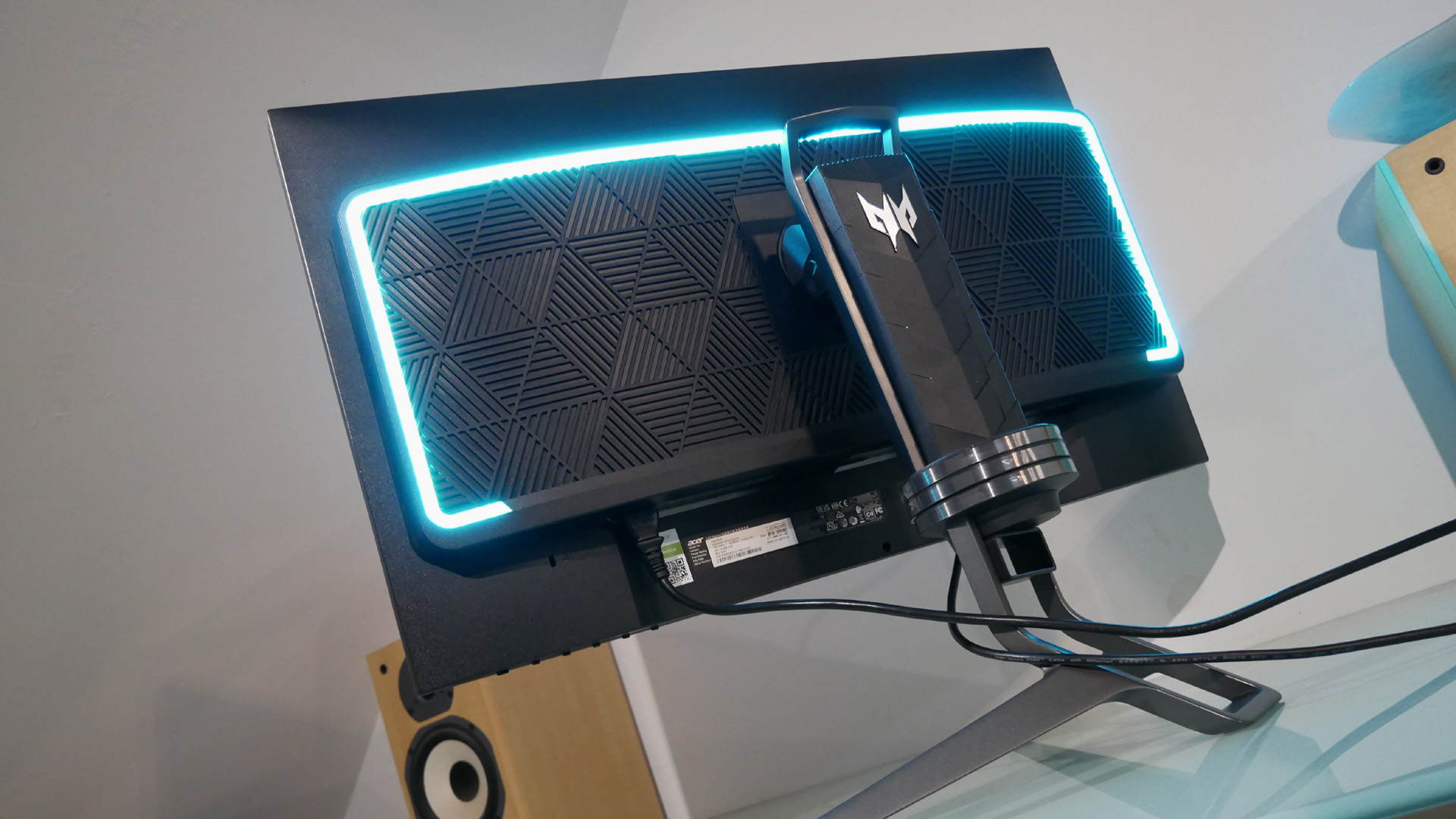
Performance
And so to the real action, what does the Predator XB323QK actually look like? Initial impressions are not, unfortunately, spectacular. In the default SDR mode, it’s awfully dull and dingy. A 400-nit monitor? Doesn’t look like one.
Turns out, the XB323QK needs to be in HDR mode to unleash the full pop of its 400 nit backlight and let the panel really sing. That’s true even of SDR content, for which on PC you’ll need to jump into the Windows Display menu, enable HDR and crank up the SDR brightness. That’s not exactly ideal because it limits your options for SDR calibration. But for gaming, it’s a tolerable workaround.
Anyway, duly unleashed the Predator is pretty sweet. The colors properly pop and the contrast is decent for an IPS panel with no local dimming. We particularly love the sheer scale of the 32-inch panel combined with the detail of full 4K. It really is a major step up from a 27-inch 1440p monitor, both in terms of size and visual sharpness. We really, really like it.
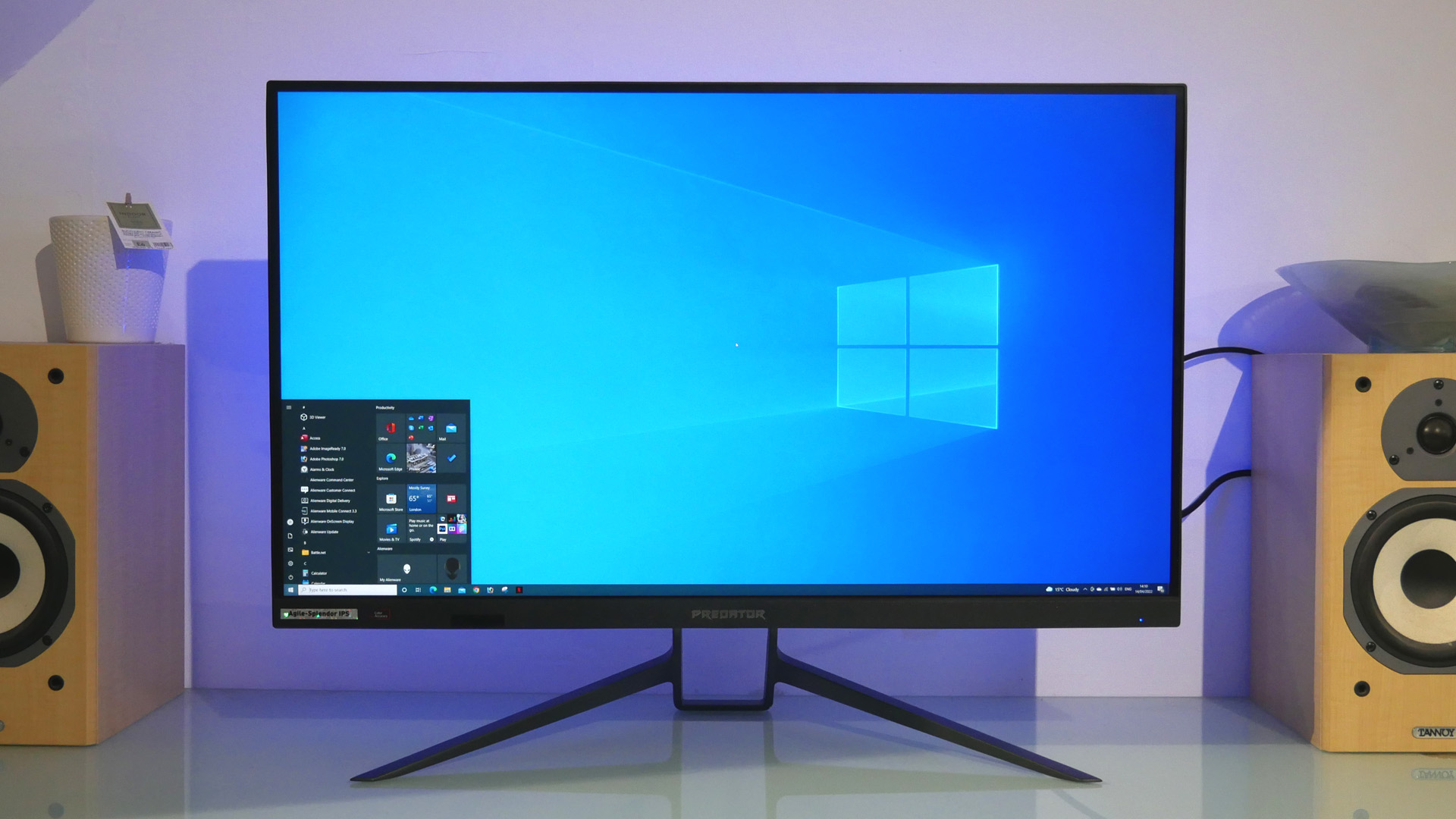
Elden Ring with all the details maxed out in 4K is quite the spectacle, that’s for sure. Indeed, the razor-sharp detail of 4K is where that Alienware OLED panel and its ultrawide monitor resolution (3,440 by 1,440) simply can’t compete. More HDR-centric titles like Cyberpunk 2077 don’t look half bad on the XB323QK, either, though this type of monitor will never compete with the likes of the Alienware OLED for dynamic range. It can’t hit the highs or the lows.
If you’re into shooters, there’s decent speed on offer, too. Acer has included two levels of user-configurable pixel overdrive in the OSD menu. There’s some pretty obvious and ugly overshoot in the ‘extreme’ mode. But ‘normal’ is pretty nippy with only slight visible blur. Again, it’s about as good as it gets for current IPS tech but can’t match the speed of OLED.
Of course, 4K on a 32-inch panel is pretty sweet for general computing, too. There’s loads of space for running multiple apps in parallel and everything from fonts to photos look super sharp and clean.
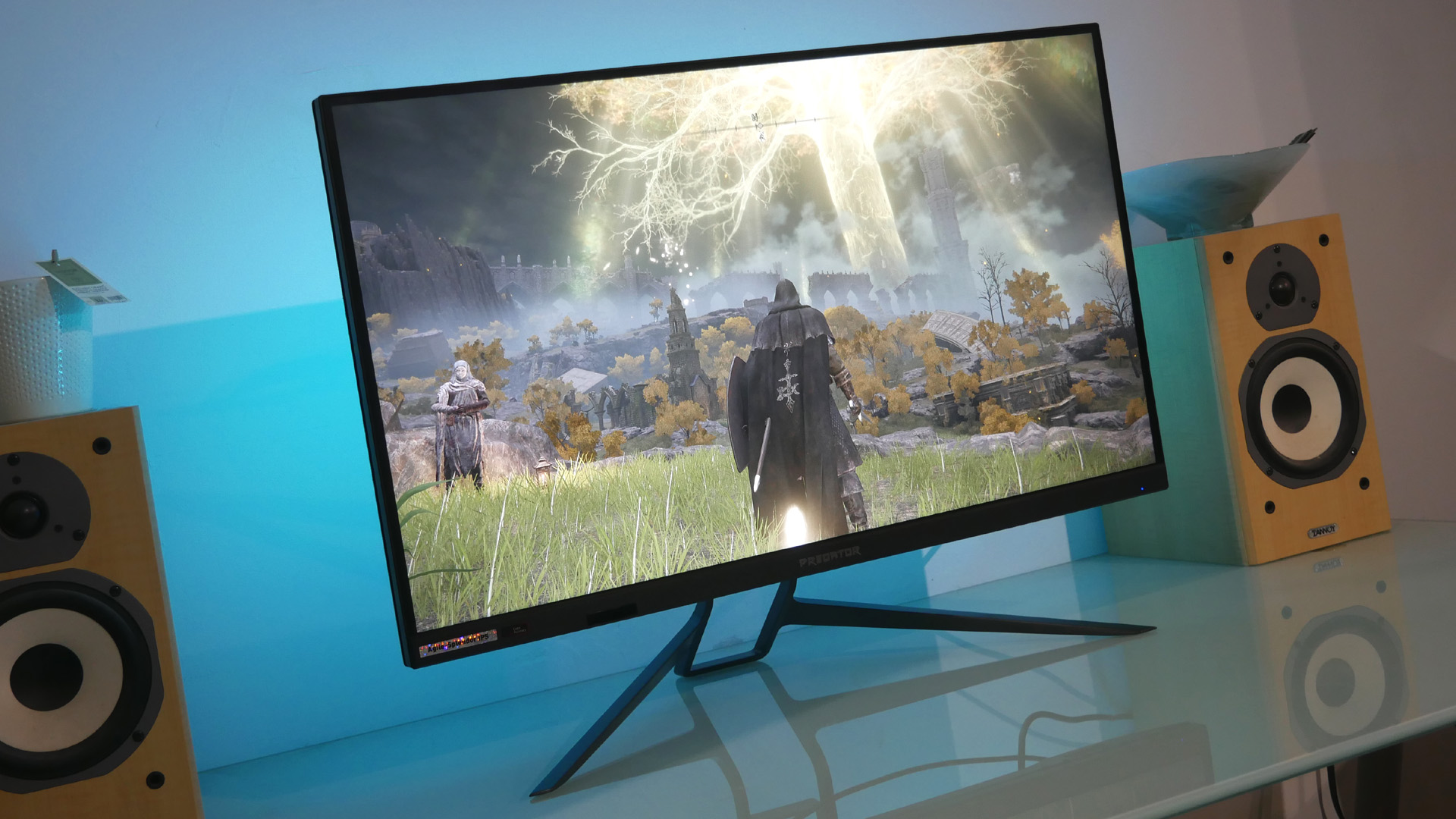
Overall - should you buy it?
We absolutely love the Acer Predator XB323QK’s basic proposition. The combination of 4K and 144Hz on a 32-inch IPS panel absolutely nails it for us. Add in USB-C connectivity and HDMI 2.1 support and you have a stellar all-round monitor and feature set for PC and something that could be a great PS5 monitor or Xbox Series X monitor.
In practice, the XB323QK could do with a tiny bit of a polish. Access to more of the panel’s 400 nits of brightness in SDR mode would be the most obvious improvement. There is a workaround, but it’s a tiny bit kludgy. That aside, our main concern involves pricing. We had been hoping this new class of 4K high refresh 32-inch monitor with HDMI 2.1 was going to be substantially cheaper. The pricing of so many things is painful right now, so that’s perhaps not a huge surprise. But when Alienware’s OLED killer is only slightly more expensive, that’s an uncomfortable comparison.
If you're after that 4K gaming screen experience, check out the specialist TVs for players, in our best gaming TV, best TV for PS5 and Xbox Series X, and best 120Hz 4K TV guides.
A serious dissertation on the finer points of input lag and overshoot followed by a forensic examination of AI-accelerated temporal upscaling. Such is a routine day in the working life of long-time tech wordsmith, Jeremy Laird. Along with GamesRadar, Jeremy’s 15-year back catalogue includes a host of tech and gaming outlets, including TechRadar and PC Gamer, not to mention contributions to mainstream media from the Independent to the Evening Standard. Complimenting Jeremy’s debilitating addiction to all kinds of digital hardware, he is also afflicted by an obsession with and a significant occupational sideline in cars and automotive technology.
